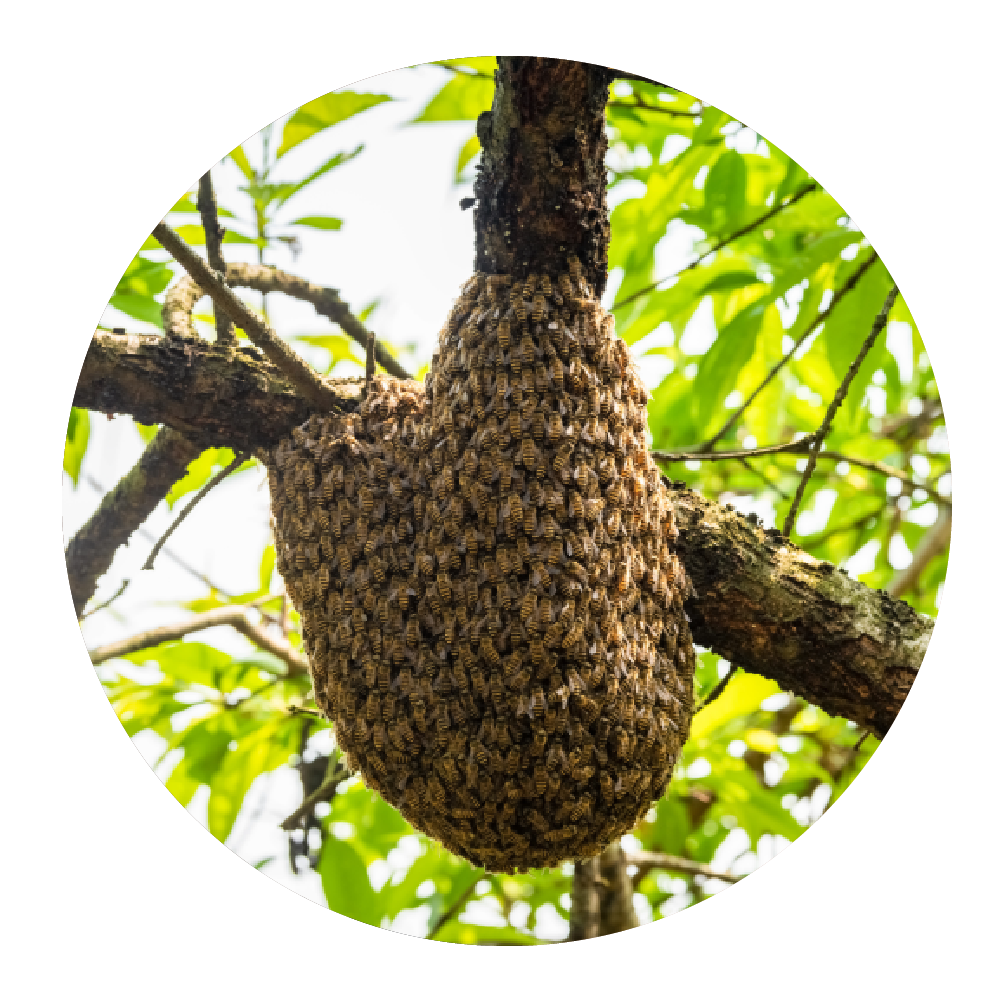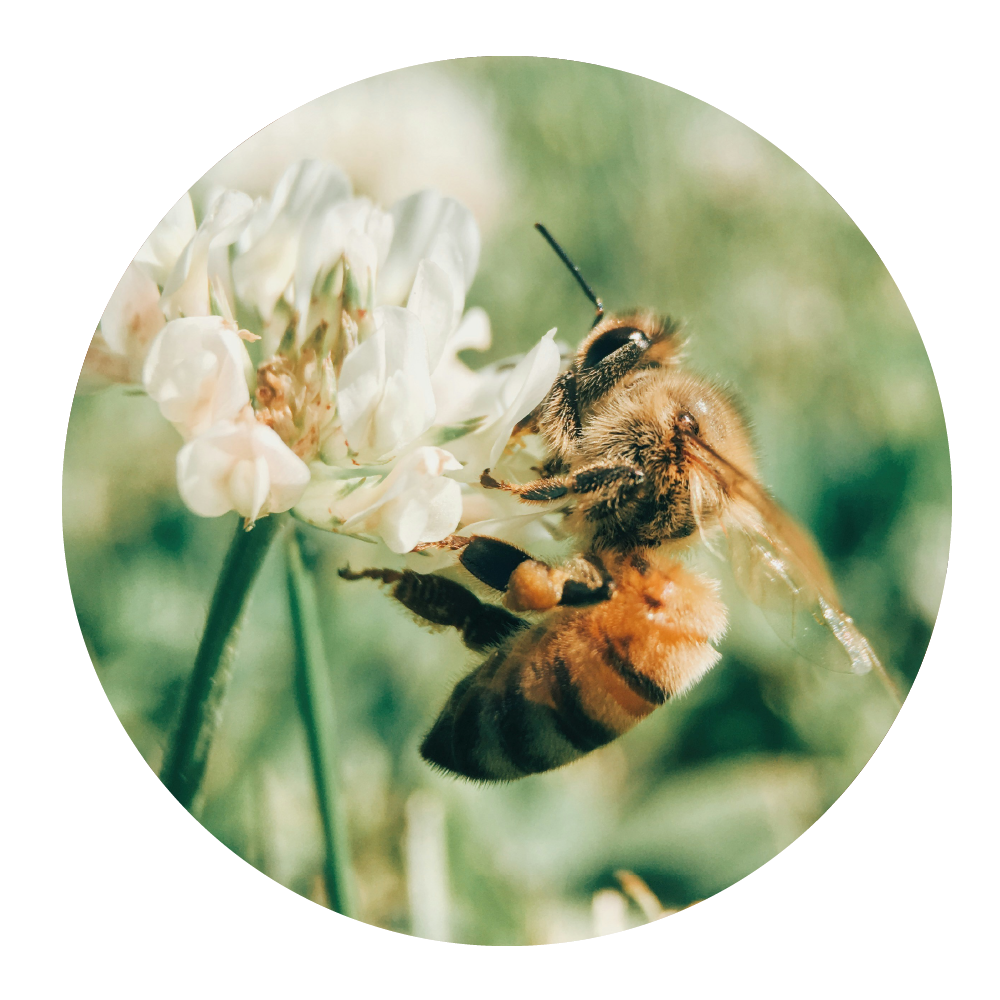Bees
With a skilled team of professionals proficient in bee removal methods, we recognise the significance of safeguarding both individuals and pollinating insects.



We have you covered!
Whether it’s a honeybee hive nestled in a residential area or a bumblebee colony disrupting commercial operations, our specialists employ specialised equipment and environmentally friendly methods to relocate the nests without causing harm. We give precedence to the welfare of bees whilst guaranteeing the safety and contentment of our clients. Rely on Verida for effective and conscientious bee nest removal services throughout Northern Ireland & Ireland.
Trusted Prices
Our prices offer excellent value and are in line with the market compared to our closest competitors. With years of experience and a dedicated client base, you can trust in our expertise for peace of mind.
Bee Nest Eradication Services
If you need bee removal services, get in touch with us today for professional guidance and a competitive rate. Verida provides a distinctive service ensuring complete removal of bees, honeycomb, and honey, while prioritising the safety of the bees.
Process of bee nest removal
Our Verida bee removal specialists will assess the bee nest using cutting-edge thermal imaging and drones to accurately determine the size of the nest in it's current location. Access equipment may be required to safely carry out the removal of the bee nest from the building structure. Our expertise and proven techniques guarantee the safe removal of all combs, honey, and bees. We inspect the area to prevent the return of other pests and bee colonies to the same void space after removal.
Survey
Access
Removal
Proofing
Have a question? check these answers.
Bees are not currently protected, though at Verida, we believe they ought to be due to their crucial role in our planet's ecosystem.
At Verida, once we have safely removed the bees, they are cared for and checked for disease at a bee sanctuary until they are ready to be relocated to woodlands or to a beekeeper.
There are various legal obligations when removing bee colonies, and failure to comply can result in hefty fines of up to £25,000 for both companies and individuals. Therefore, it is imperative to use a professional bee nest removal company such as Verida Pest Management.
A bee colony is a social community of bees residing together in a hive or nest. The colony comprises three types of bees:
Queen – A single queen oversees the entire hive. Her primary role is to lay eggs, ensuring the hive’s next generation of bees. Additionally, the queen produces chemicals that regulate the behaviour of the other bees.
Workers – All female, these bees are responsible for foraging for food (pollen and nectar from flowers), constructing and safeguarding the hive, cleaning, and circulating air by beating their wings. Workers are the only bees typically seen flying outside the hive.
Drones – The male bees, whose sole purpose is to mate with the new queen. Several hundred inhabit each hive during the spring and summer. However, in winter, when the hive switches to survival mode, the drones are expelled.
Bees can flourish in both domestic and natural settings, favouring locations that provide shelter from predators.
You may encounter bees in gardens and woodland areas, where flowering plants offer an excellent food source.
Bees can also be found within building structures, such as cladding, insulation, cavity walls, airbricks, and chimney stacks.
Bees rely on both nectar and pollen from flowers for their sustenance. Nectar supplies them with energy, while pollen offers protein and other essential nutrients. Most of the pollen is used to feed their larvae, but bees also transfer pollen between plants, facilitating the pollination process vital for plants and the environment.
Did you know that the flavour of honey varies based on the flowers that bees visit?
If you have a honeybee infestation, do not try to remove the bees yourself!
Get in touch with Verida, the honeybee removal specialists. We will conduct a thorough survey to develop a tailored plan, ensuring the safe removal of the bees and honeycomb from your property.
Bees typically sting only when they feel threatened or if their queen is in danger. When a bee stings, it releases a pheromone that alerts other bees to the threat, which can lead to multiple stings.
Although bee stings are painful, they are generally not dangerous. However, for individuals allergic to bee venom, stings can be potentially life-threatening.
No, once honeybees have settled, they can stay in the same location for up to 15 years or more.
Male bees lack the ability to sting. Only female bees, including both worker bees and queens, possess stingers. These stingers are modified from their ovipositors, which are organs used for laying eggs.
The queen honeybee has the capacity to lay between 2,000 and 3,000 eggs daily during the height of summer.
In the expansive realm of a honeybee infestation, a colony can burgeon to a staggering 500,000 bees!
In the United Kingdom, honeycomb enjoys legal protection. It's strongly advised against using pesticides on honey bees, as any sprayed pesticide will likely find its way back to the comb via the bees, causing contamination. This poses a significant risk, as foraging bees may then carry the contaminated honey back to their hives, affecting beekeepers' supplies and potentially entering the human food chain. Such actions constitute a punishable offence.
It's important to note that there are no authorised pesticides for use on honey bees in the UK. Spraying bees with pesticides is ineffective and exacerbates the issue, as it eliminates the bees responsible for maintaining the integrity of the honey and comb. Consequently, this can lead to damage to the honey and collapse or decay of the comb within the structure.
Honey bee swarming is a naturally occurring phenomenon that can happen at any point throughout spring and summer.
During a swarm, a significant portion of the honey bee population departs from their hive in quest of a suitable spot to establish a fresh colony. This location could be virtually anywhere that provides warmth, dryness, and shelter from the elements, along with ample space for the colony to grow.
Typical spots for unwanted colonies include the interiors of roofs, behind fascia boards and soffits, as well as within wall voids or outbuildings such as sheds or garages.
While there are more than 270 bee species in Britain, only honey bees engage in swarming behaviour.


